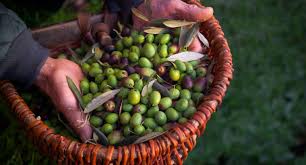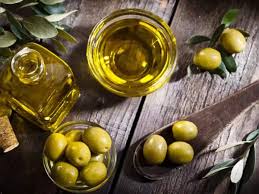The Benefits and Uses of Olive
Olive is a wonderful fruit that comes from the olive tree. These trees are mostly found in warm regions, and olives have been a part of human culture for a very long time. People use olives for various things, and they are not just tasty but also very good for our health.
One of the amazing things about olives is that they come in different colors, like green and black. The color actually depends on how ripe the olive is when it’s picked. Some people prefer the green ones, while others like the black ones better. Each color has its own unique flavor, making olives a versatile and delicious addition to many dishes.
People have been using olives to make oil for a very long time. Olive oil is known for being a healthy choice in cooking. It’s rich in good fats and can add a delightful taste to salads, pasta, and many other foods. Many cultures around the world appreciate the value of olive oil not only in cooking but also for its potential health benefits.
Apart from being tasty and useful in the kitchen, olives have some interesting facts about them. They are often linked to Mediterranean cuisine, where olive trees have been cultivated for centuries. In addition to being a food source, the olive tree is also appreciated for its beauty and symbolism. It’s a tree that stands strong and provides for people in many ways.
In some places, olives are cured before they are ready to eat. This process involves treating the olives with salt or brine to remove the bitterness. After the curing process, olives become a delightful snack or a perfect addition to various dishes. The variety of ways olives can be enjoyed showcases their versatility in the culinary world.
Furthermore, olives are believed to have health benefits. Some studies suggest that the healthy fats in olives and olive oil may contribute to heart health. They are also a good source of antioxidants, which can help protect our cells from damage. Including olives in a balanced diet can be a tasty and nutritious choice.
Additionally, olives are more than just a delicious fruit; they are a symbol of culinary diversity, health, and cultural richness. Whether you enjoy them on a pizza, in a salad, or as a snack, olives have a unique and savory taste that has stood the test of time. So, the next time you savor the flavor of olives, remember the long history and the many benefits that come with these small, mighty fruits.
Read Also: The Appearance and Features of Shrimp
Benefits of the Olive

Olives offer a range of health benefits that make them a valuable addition to your diet. Here are some of the positive aspects associated with consuming olives:
1. Rich in Healthy Fats: Olives contain monounsaturated fats, which are considered heart-healthy. These fats may contribute to lowering bad cholesterol levels and reducing the risk of heart disease.
2. Antioxidant Properties: Olives are a good source of antioxidants, such as vitamin E and polyphenols. Antioxidants help combat oxidative stress in the body, potentially reducing the risk of chronic diseases.
3. Anti-Inflammatory Effects: The compounds found in olives may have anti-inflammatory properties. Including olives in your diet could help in managing inflammation, which is linked to various health issues.
4. Support for Digestive Health: Olives contain fiber, which is essential for a healthy digestive system. Fiber aids in digestion, helps prevent constipation, and supports a balanced gut microbiome.
5. Nutrient Content: Olives provide essential nutrients, including iron, vitamin A, and calcium. These nutrients play a role in maintaining overall health, supporting immune function, and promoting bone health.
6. Weight Management: The healthy fats and fiber in olives can contribute to a feeling of fullness, which may assist in weight management by reducing overall calorie intake.
7. Potential Cancer Prevention: Some studies suggest that the antioxidants in olives may have protective effects against certain types of cancer. However, more research is needed to establish a definitive link.
8. Skin Health: The antioxidants and healthy fats in olives may benefit the skin by promoting hydration and protecting against oxidative damage. Including olive oil in skincare routines is a common practice for its moisturizing properties.
9. Mood Enhancement: The monounsaturated fats in olives may have positive effects on brain health. These fats are associated with improved mood and cognitive function.
10. Versatility in Culinary Use: Besides their health benefits, olives add a burst of flavor to various dishes, enhancing the overall taste and making it easier to enjoy a diverse and nutritious diet.
While olives can be a healthy addition to your diet, it’s essential to consume them in moderation, especially if they are cured or processed, as they can be high in sodium. As with any dietary changes, it’s advisable to consult with a healthcare professional or nutritionist for personalized advice based on individual health considerations.
Read Also: The Health and Lifespan of Salmon Fish
Uses of the Olive

Olive finds versatile uses in various aspects of our lives, from culinary delights to skincare. Here are some of the common uses of olives:
1. Culinary Delights: Olives are a staple in many cuisines around the world. They can be enjoyed in various forms, such as appetizers, snacks, or as key ingredients in salads, pasta dishes, and pizzas.
2. Olive Oil Production: Olives are pressed to extract olive oil, a widely used cooking oil with a rich and distinct flavor. Olive oil is not only delicious but also considered a healthier alternative to some other cooking oils due to its monounsaturated fat content.
3. Condiments and Spreads: Olives are often used to make tapenade, a flavorful spread or condiment. This mixture typically includes olives, capers, garlic, and olive oil, creating a tasty topping for bread, crackers, or as a complement to various dishes.
4. Mediterranean Cuisine: Olives are a hallmark of Mediterranean cuisine. They are integrated into dishes like Greek salads, antipasti platters, and Spanish tapas, adding a burst of flavor and a unique texture.
5. Pickling and Curing: Olives can be pickled or cured to enhance their taste and reduce bitterness. This process involves treating olives with salt, brine, or other solutions, resulting in different textures and flavors. Pickled olives are commonly used in sandwiches and salads.
6. Snacking: Olives make for a healthy and satisfying snack on their own. Whether green or black, pitted or with the pit, they offer a convenient and flavorful option for a quick and nutritious bite.
7. Olive Leaf Extract: Extracts from olive leaves are used in some traditional medicines for their potential health benefits. Olive leaf extract is believed to have antioxidant and anti-inflammatory properties.
8. Cosmetics and Skincare: Olive oil is a popular ingredient in skincare products. It is known for its moisturizing properties and is often used in creams, lotions, and soaps to nourish the skin.
9. Hair Care: Olive oil is also used in hair care routines. It can be applied to the hair and scalp to provide moisture, promote shine, and help manage frizz.
10. Ceremonial Use: Olive branches and leaves have symbolic significance. In various cultures, they are used in ceremonies and celebrations as a symbol of peace, victory, and purity.
From the kitchen to the beauty routine, olives and olive products have found their way into many aspects of our daily lives, contributing to both our well-being and our enjoyment of diverse and flavorful experiences.
How to Grow and Care for the Olive
Growing and caring for olive trees can be a rewarding experience. Here’s a basic guide to help you nurture healthy olive plants:
1. Growing Conditions:
Climate: Olive trees thrive in warm, subtropical climates. They prefer temperatures between 70-85°F (21-29°C) during the day and not below 50°F (10°C) at night. They can tolerate some cold, but prolonged frost may harm them.
Sunlight: Olive trees love sunlight. Plant them in a location where they receive full sun exposure for most of the day.
Soil: Well-draining soil is crucial for olive trees. Sandy loam or loamy soil with a slightly acidic to alkaline pH (6.0-8.5) is ideal.
2. Planting:
Spacing: When planting multiple trees, provide adequate spacing (at least 10-20 feet apart) to allow proper growth and air circulation.
Depth: Plant the tree at the same depth as it was in the nursery container. Ensure the graft union is above the soil line.
Mulching: Mulch around the base of the tree to conserve moisture and suppress weeds. Use organic mulch like bark or compost.
3. Watering:
Establishment Period: Olive trees need regular watering during the first couple of years. Keep the soil consistently moist but not waterlogged.
Mature Trees: Once established, olive trees are drought-tolerant. Water deeply but infrequently, allowing the soil to dry out between watering.
4. Pruning:
Young Trees: Prune young trees to encourage a balanced shape and remove any dead or damaged branches.
Mature Trees: Mature olive trees benefit from light pruning to maintain shape and encourage air circulation. Prune in late spring or early summer after the fruit has set.
5. Fertilizing:
Young Trees: Use a balanced fertilizer during the growing season for young trees. Apply fertilizer in spring.
Mature Trees: Olive trees are relatively low-maintenance. Fertilize mature trees sparingly, mainly if the soil lacks nutrients.
6. Harvesting:
Timing: Olives are typically harvested in the fall, but the exact timing depends on the olive variety and the desired ripeness for intended use (green or black olives).
Methods: Harvest olives by hand or by gently shaking branches onto nets placed beneath the tree. Use care to avoid damaging branches.
7. Common Issues:
Pests: Watch for pests like olive fruit flies and scale insects. Treat infestations promptly using appropriate methods.
Diseases: Olive trees can be susceptible to fungal diseases. Ensure proper air circulation and avoid overwatering to prevent issues like root rot.
8. Additional Tips:
Grafted vs. Non-Grafted: Many olive trees are grafted onto rootstocks. Be aware of the type of tree you have and any specific care considerations for the rootstock.
Patience: Olive trees may take several years to start producing a significant amount of fruit. Be patient and consistent in your care.
By following these guidelines and adapting them to your specific climate and soil conditions, you can enjoy the beauty of a thriving olive tree and potentially harvest your own olives for culinary use.
Read Also: Handling of Wastes and Treatment Methods









